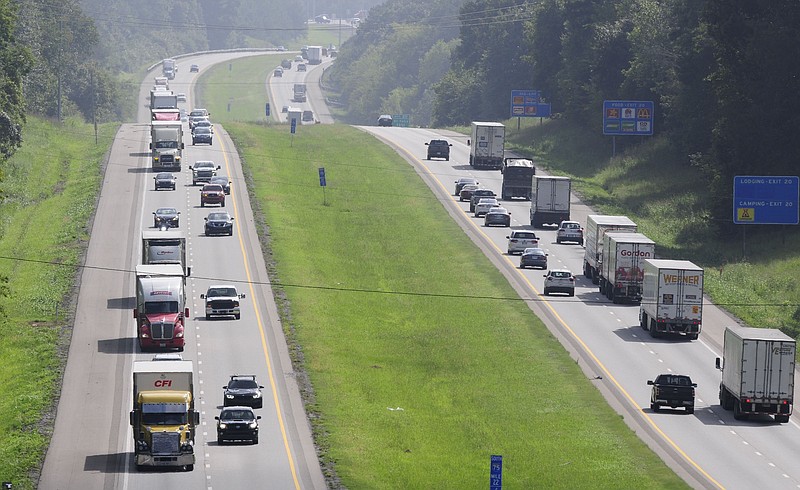Put enough funding and engineering finesse behind it, and you can build a road anywhere. That was not always the case.
Tennessee's first roads generally followed animal traces and American Indian footpaths before becoming wagon trails and, eventually, the paved thoroughfares that have helped us form connected communities. A new podcast, "Highway See," is tracking that history.
In these episodes, listeners will learn:
> How a road differs from a trail, a trace and a path.
> How communities once held road-making bees - a social gathering like a quilting bee - to construct roads.
> Why it costs more to build a road in East Tennessee than elsewhere in the state.
> Why Tennessee was once known as the "mud hole" of the United States.
> How pioneers from Daniel Boone to Henry Ford figured into road development in the Volunteer State.
Drivers may take their roads for granted, but the ability to bridge any distance to stay connected is vital to society, said podcast narrator Chris Hill of Knoxville production company HumblePod.
"Being connected, dependent, intermixed, that's what makes a community, what binds it together," he said. "Humans can't survive without communities, and communities can't exist without the roads that keep them connected."
Tennessee has nearly 95,000 miles of road, 1,233 miles of which is interstate. Long before these superhighways were built, the first roads served the nonmotorized vehicles of the time: wagons and stagecoaches.
About a century after Tennessee became a state (in 1796), roads became a priority for policymakers as they tried to catch up with the progress of surrounding states, said Paul Degges, chief engineer for the Tennessee Department of Transportation. The emergence of the Industrial Age in the late 19th and early 20th centuries highlighted the need to move heavy equipment without getting stuck in muck.
More Info
“Highway See: The Historical Narrative of Tennessee’s Roads and Bridges” can be heard on Spotify, Apple, Google and other podcast services. Learn more at highwaysee.com.
"Tennessee was known as the mud hole of the U.S," Degges said. "You could go around Tennessee, but without dedicated funding for transportation on the state level, there was a perceived problem."
The podcast's first episode gives an overview of these early efforts. Future installments mostly will examine general topics, such as ridge cuts, an engineering achievement by which road conquered rock.
"Really the goal is to tell a statewide story throughout the series and with each episode," said Susie Alcorn, the podcast's creator and executive producer. "Part of what we want to draw out in this is for people to have an understanding of how roads get built."
Most episodes will use examples from across the state. One exception is an episode devoted to the Foothills Parkway in the Great Smoky Mountains. Its long-delayed, 1.65-mile "missing link" was completed in 2018, 52 years after the first sections of the 72-mile scenic route were begun.
"There's a really fascinating story around how that came to be," she said
Alcorn has served as executive director of the Tennessee Infrastructure Alliance since 2005. She said her tenure with the nonprofit organization, which advocates for infrastructure funding, gave her the idea for a podcast.
"I've heard lots and lots of stories about Tennessee's roads and bridges," she said.
A native of Manchester, Alcorn said her favorite stretch of Tennessee highway is "undeniably" the high-altitude climb between Chattanooga and Nashville on Interstate 24.
"When I was young, I used to joyride over Monteagle Mountain," she said. "Of course, gasoline was really cheap back then, but I still love to drive over Monteagle Mountain."
Contact Lisa Denton at ldenton@timesfreepress.com or 423-757-6281.
